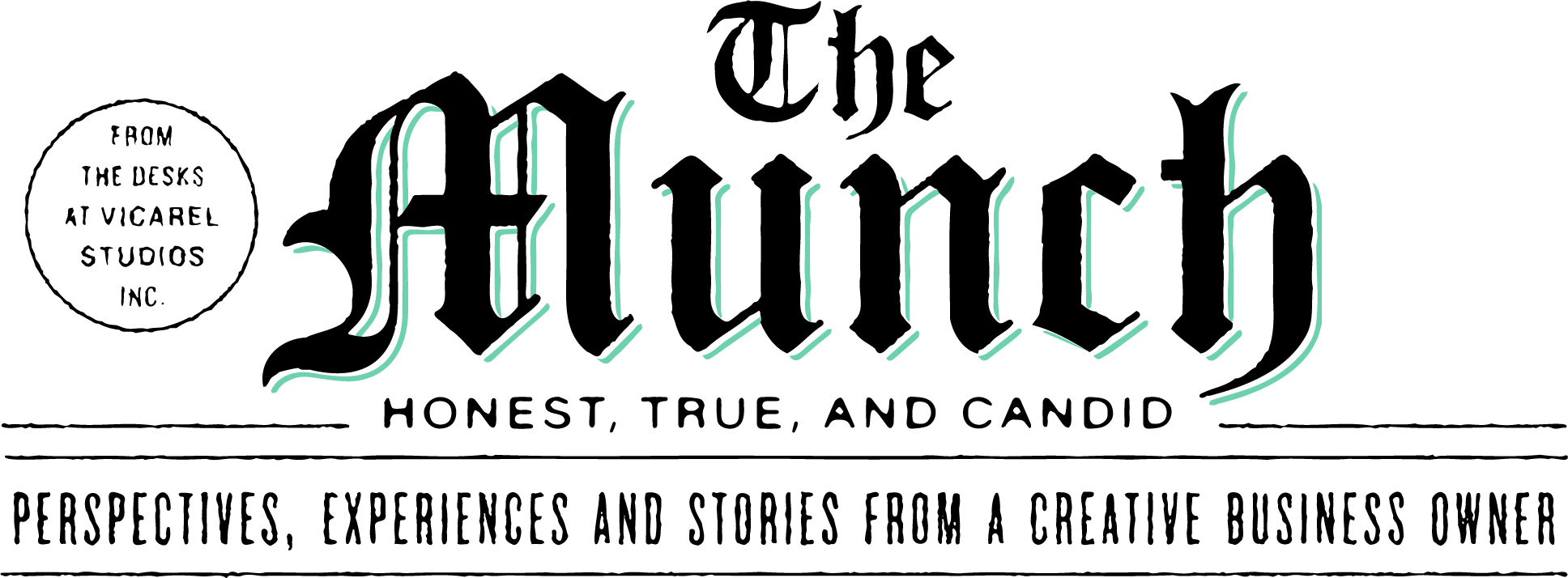The Future of Graphic Design in a World with Artificial Intelligence
Vol. 089
The Future of Graphic Design in a World with Artificial Intelligence
Artificial Intelligence is still in its infancy stage, but it already seems to be wildly powerful. Will AI replace you, or will you utilize artificial intelligence to help your graphic design career thrive?
Chat GPT is at the top of many tech and creative conversations right now. And, if you haven’t tried it, all I have to say is…
Woah.
It’s really fascinating to experiment with AI software, but it simultaneously is terrifying.
This software can not only write unique and original ideas based on its findings of the entire internet, but you can do crazy things like change the tone of voice, write and rewrite in particular styles, turn recipes into grocery lists, and write code for websites and apps. And, this only scrapes the surface…
If AI language and writing is already this far along, and AI image generating software like DALL-E 2 can generate spectacular images with simple prompts, the worlds of graphic design, branding, and art are not far from being completely revolutionized.
As a creative professional, my mind is racing.
Am I about to be replaced by computers?
Before you get too scared, I want to put a few things into perspective that may bring some comfort.
Consider the following:
The underlying human component of just about anything will likely always be irreplaceable by technology.
Just because it can be done by robots doesn’t mean it should.
To be an Early Adopter of AI could change (or save) your career.
I promise that reading this through will make you feel better about artificial intelligence.
1. The underlying human component of just about anything will likely always be irreplaceable by technology.
To create any sort of graphic, visual, or design with AI, a human must first provide a “prompt”, or a written articulation of that which you’d like to see. For example, my prompt here was: “a rough, worn, hand drawn font”
I’d like to acknowledge this isn’t even close to what I wanted. I wanted a full font, not a weird “NAF” logo.
Point being, this technology still can only operate based on the prompt that the human gives it.
One of my favorite artists, French-American painter, Mark Maggiore, was recently asked about what he thinks of AI’s impact on the creative industry. I’m paraphrasing here, but he said something to the effect of:
If you see a piano playing itself at the mall, you won’t stop and watch it play. There is no talent to appreciate; it’s a machine and a computer. However, if you saw a human playing that same song on that same piano, you would likely stop. You would appreciate their skill and talent, and it would cause you to think.
Maggiore’s point highlights that even despite technology's ability to produce that which humans are capable of producing, we still desire the human component. Even if technology can start designing logos, it will likely be so formulaic or inherently “tech-influenced”, that the output will be void of all human connection that people were after in the first place.
Think of how boring a concert would be with just a pre-recorded set of vocals, as opposed to a live singer.
2. Just because it can be done by robots doesn’t mean it should.
Consider a few of the jobs where robots and technology have replaced humans over the years–the tech often sucks.
Robotic customer service representatives on calls.
Every time I get an automated voice that passes me around, giving me prompts to slowly understand what I need, I swear I lose 3 years of my life due to frustration and fury. Ha!
However, when talking directly to a human customer service representative, my problems are almost always mitigated far more quickly, and it's done with substantially less frustration and time.
Humans 1, technology 0.
Self checkout at grocery stores.
Yes, sometimes it is quite convenient.
But when I receive the “please place your strawberries in the bagging area” request … as my strawberries are sitting in the bagging area…it drives me absolutely crazy.
There again, until a human comes over, swipes a card and pushes 3 buttons, I can’t move forward. We still need the human.
Humans 2, technology 0.
These examples are just a small opportunity to highlight the positive experience and impact that a human or can have on a consumer experience versus a robot.
We as graphic designers, artists, writers and other creatives can continue to embrace the same.
3. To be an Early Adopter of AI could change (or save) your career.
Finally, and maybe most importantly, I think it’s worth acknowledging that artificial intelligence is in its infancy stage, and we all still have the chance to implement this powerful tool to help GROW our careers as opposed to REPLACE our careers.
AI is essentially brand new to the graphic design and creative industry.
Now is a great time to begin learning and understanding the impacts, implications, processes and limitations of AI!
Are there currently moral and ethical concerns about AI? Yes, absolutely! However, I don’t think this means we should fear or ignore artificial intelligence. Actually, these concerns should empower us to understand it further so as to help solve these concerns in our favor.
Some people thought the internet was a fad when it first started. Others immediately started experimenting with it and trying to figure out how to adapt the new technology to their industries. I believe that we should be doing the same thing with AI.
To be an early adopter of a new technology like AI is a profound opportunity. We are the first to experiment with its ability to impact, evolve and expand the graphic design and art industries for future generations. This is exciting!
The diffusion of innovation is a theory — pictured in a graph below — that visualizes societies propensity for accepting new technology.
Source: slidebazaar.com
The Innovators (in this case, those who have created, developed or worked on AI, or those very early on in implementing this technology) are a tiny fraction of society. They build or start something new, and the Early Adopters are the first to utilize this new thing.
You have a chance to be an Early Adoptor of AI!
Oftentimes, as a particular technology develops, the individuals who “get in early” reap the highest rewards. Alternatively, early adopters and innovators could suffer the biggest losses. Impelmenting AI right now could be perceived as a “risk”; however, if all you’re risking is a bit of time and resources, the longterm reward could far outweigh that risk.
Think of it like investing—high risk, high reward: those who invested in Facebook, Apple, Amazon, Netflix, or Google early on took big risks; however, they reaped higher rewards through returns on their investment.
To reap the benefits of being an early adopter may look like financial stability, job security, or something we don’t yet understand or know.
Overall, AI is still young. AI is still wildly imperfect, and there will (maybe always) be a need for a human component when it comes to technology.
When you consider the options of “to embrace this technology or not to embrace this technology” consider the career trajectory of those who decided to start using Photoshop / Illustrator when it first came out vs those who didn’t…
You got this!
Cheers,
Adam



